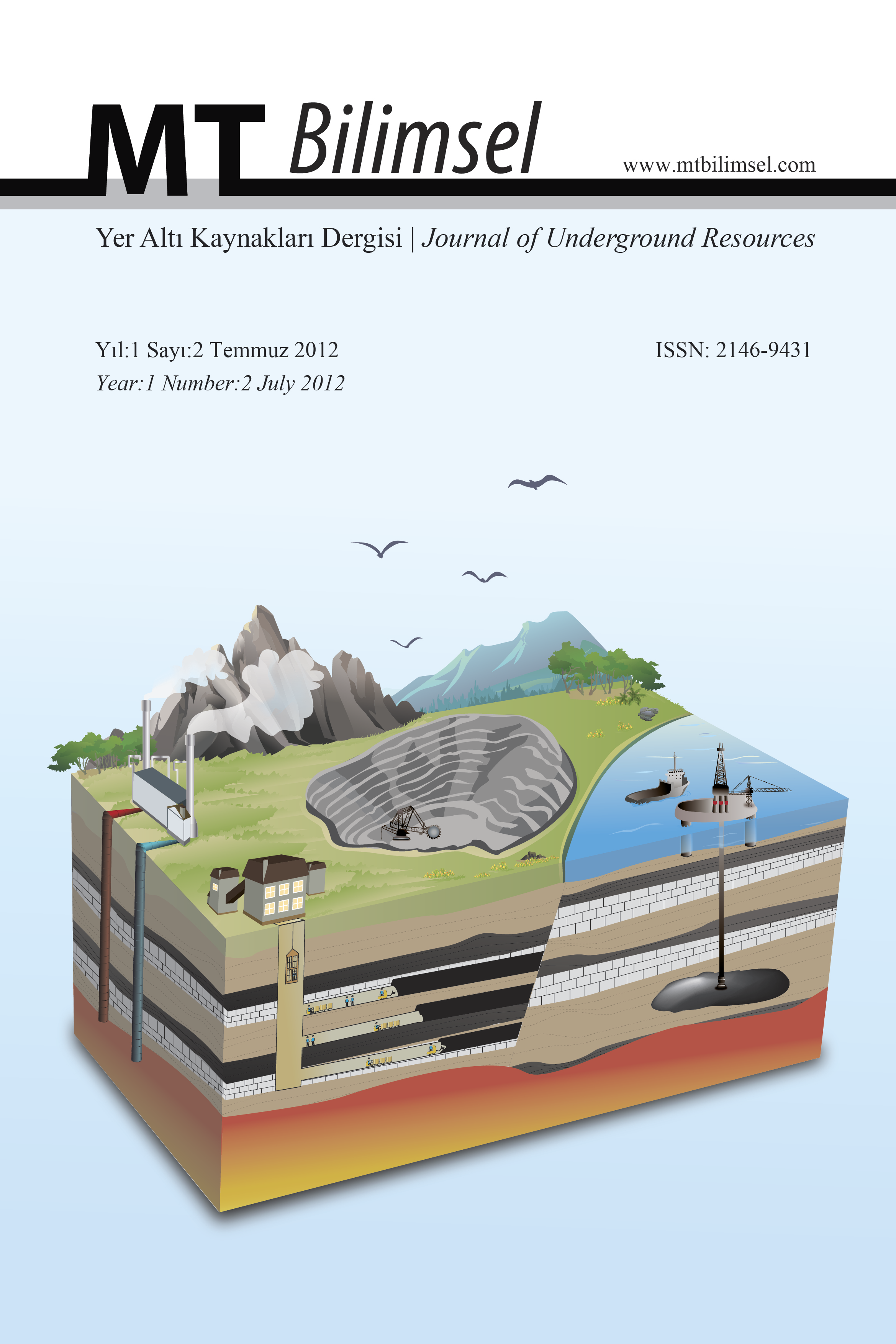Simav Depreminin Yüksek Hızlı Tren Tünellerine Etkisi
Bu çalışmada, “Ankara-İstanbul Yüksek Hızlı Tren Projesi” kapsamında imalatı devam eden 7 adet tünele (10991,8 m.) 19 Mayıs 2011 tarihinde Kütahya’nın Simav ilçesinde meydana gelen Mw=5,8 büyüklüğündeki depremin etkileri incelenmiştir. Bilecik ili Bozüyük ilçesi civarında bulunan tünellerden deprem episentr noktasına en yakın tünel (36 nolu tünel) 110 km, en uzak tünel ise (30 nolu tünel) 117 km mesafede bulunmaktadır. NATM (Yeni Avusturya Tünel Açma Yöntemi) ile imalatı devam eden ve nihai kaplaması tamamlanmış tüneller içerisinden şerit ekstansometre, optik tarama ve opto-trigonometrik yöntemler ile ölçümler alınmıştır. Bu ölçümler neticesinde tünel içerisinde oluşan yer değiştirmeler (deplasmanlar) tespit edilmiştir. Ayrıca tünellerin açıldığı yerel kaya koşullarının jeoteknik özellikleri ve tünellerin kaplama durumları da değerlendirilerek deprem yükleri altında tünellerin davranışları belirlenmeye çalışılmıştır. Elde edilen veriler ısığında tünel imalatı sırasında ve sonrasında ne tür tedbirler alınması gerektiği tartışılmaya çalışılmıştır
The Effect of Simav Earthquake to the High Speed Railway Tunnels
In this study, within the scope of Ankara-Istanbul High Speed Railway Project, the effects of the earthquake in Simav in the town of Kütahya with a magnitude of Mw=5.8 on 19 May 2011 have been investigated along 7 tunnels (10991,8 m.) ongoing. The nearest tunnel (tunnel number 36) is 110 km and the most distant tunnel (tunnel number 30) is 117 km to the earthquake epicenter point in Bilecik near Bozüyük. Convergence measurements have been taken with the tape extensometer, optical scanning and opto-trigonometric methods from the tunnels, ongoing the construction with NATM (New Austrian Tunneling Method) and completed the final coating. As a result of these measurements, the displacements occurring in the tunnel have been identified. Also The tunnel behaviours under the seismic loads have been determined with the obtained data by evaluating the geotechnical properties of the local rock conditions excavated the tunnels and coating states of the tunnels. It has been confirmed that in the primary support system manufacturing, the displacements after the earthquake have especially increased in weak rock conditions nonfinished the ring, there has been sudden settlements from place to place and also, there has been warps in the bolt plates being from the support system elements. Any displacements have not been observed in the tunnels completed the concrete lining manufacturing. In light of the data obtained during and after manufacture of the tunnel tried to discuss what measures should be taken
